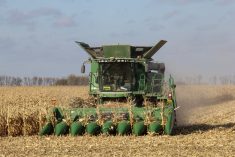LOUISVILLE, Ky. — Severe drought conditions persist in Mexico and the southern United States, despite recent snow in the Great Plains and rain in Oklahoma and Texas.
The U.S. Department of Agriculture and the American National Weather Service’s Climate Prediction Center (CPC) say the La Nina that has created mild, southerly air flows into Western Canada and serious drought in the western and southern U.S. will fade away between March and May.
Mike Halpert of the CPC said it will come too late for Texas and Oklahoma.
Read Also

Mixed year for hail claims across Prairies: CCHA
The 2025 crop year was an average year for hail across the Canadian Prairies, with overall claim numbers down slightly compared to last year, reported the Canadian Crop Hail Association (CCHA).
Texas received above average precipitation in December and January delivered, with 12.5 centimetres of moisture falling in east-central and southeastern areas.
However, the six-month accumulation is still 20 cm below average in most areas. A quarter of Texas continues to be classified as in a severe drought, reducing grain and other commodity expectations and forcing cattle producers to keep seeking feed to supplement scant pastures.
The weather pattern has put 90 percent of Florida into a drought situation. In South Dakota, only 9 cm of winter moisture was recorded over the past two months, placing that state firmly into a drought situation with the third lowest precipitation in 100 years.
Drought and abnormally dry conditions stretch from British Columbia’s Okanagan Valley to Mexico, taking in much of the region’s grain and cattle country, sparing Montana and Wyoming but catching Colorado, Utah, Nevada, New Mexico and Arizona. Texas and southern Kansas are the hardest hit areas.
North Dakota, despite being too wet last year, has fallen into an abnormally dry situation. Minnesota is now classified as in a moderate drought in the north and severe drought in the south and eastern region to Duluth, said Richard Tinker of the CPC.
The May fade of La Nina, predicted by the World Meteorological Organization, could return North America to typical, seasonal weather patterns by the end of May, which is too late for traditional U.S. planting seasons. It might limit yields for grain producers but could spell relief for cattle producers.
For a link to the Drought Monitor map, visit droughtmonitor.unl.edu/monitor.html.














